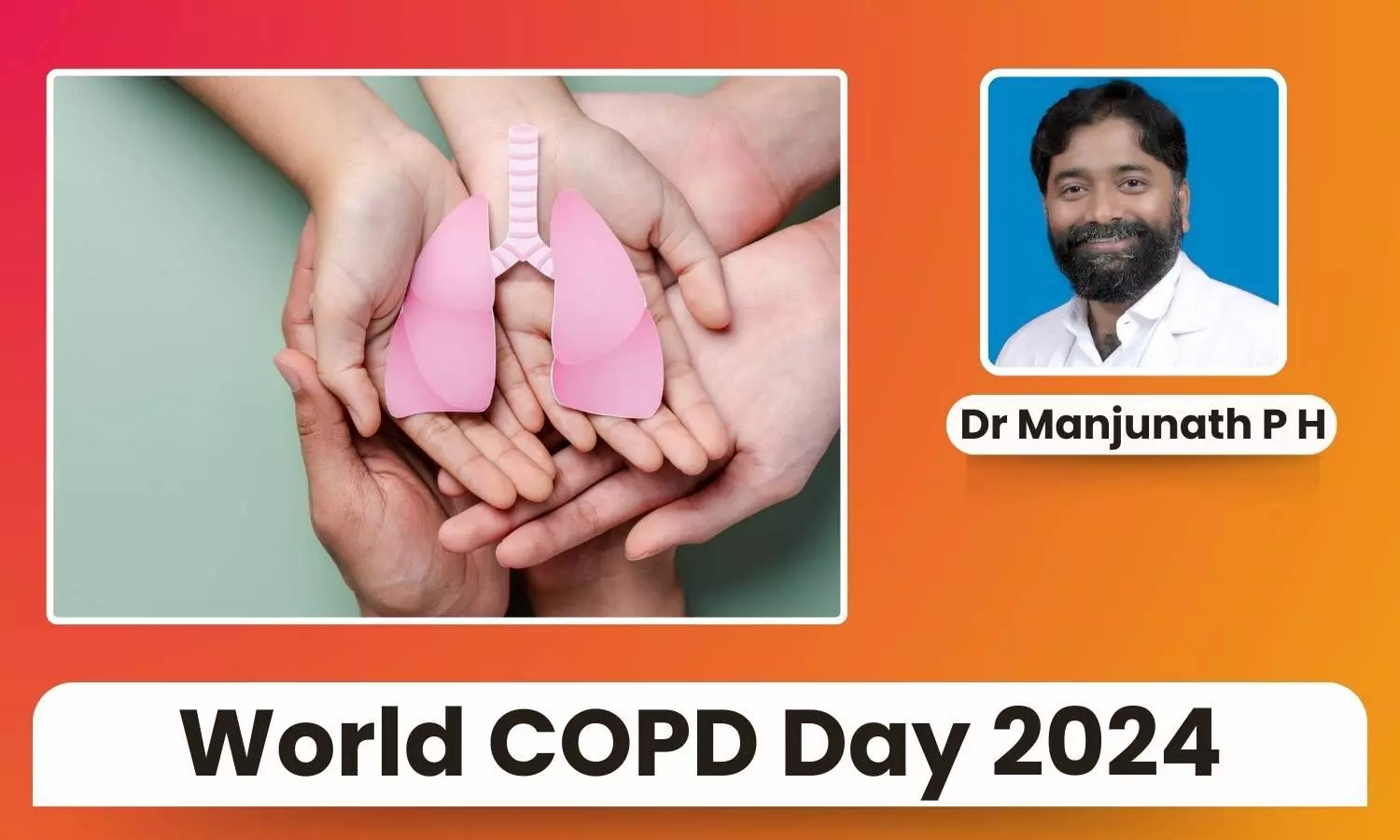World COPD Day 2024: Know the Signs and When to Act - Dr Manjunath P H

As we observe World COPD Day today, Pulmonologist Dr Manjunath P H sheds light on chronic obstructive pulmonary disease (COPD), a debilitating lung condition impacting millions worldwide.
Chronic Obstructive Pulmonary Disease (COPD) is a long-term, progressive lung disease characterized by breathing difficulties and airflow limitations. This disease, primarily caused by smoking and environmental pollutants, affects millions of people globally.
Understanding the signs and symptoms of COPD and knowing when to seek help is essential for early diagnosis and better management. Here, we’ll discuss the symptoms, risk factors, and important steps for those experiencing symptoms to take.
Key Symptoms of COPD
1. Chronic Cough: One of the earliest signs of COPD is a persistent cough that may produce mucus. Many people dismiss this as a “smoker’s cough,” but it can signal underlying lung irritation or damage. This cough is often more severe in the morning or during physical exertion.
2. Shortness of Breath (Dyspnoea): Experiencing breathlessness, especially during physical activities, is a major symptom of COPD. As the disease progresses, shortness of breath can increase, making even simple tasks challenging. Shortness of breath is often reported as a “suffocating” feeling, where the person feels unable to catch their breath.
3. Wheezing: Wheezing, a whistling sound heard while breathing, results from airway obstruction. Wheezing is often more pronounced during physical activity or when the person has a cold or other respiratory infection.
4. Chest Tightness and Discomfort: Many COPD patients report a sensation of tightness or pressure in the chest. This can be especially distressing and may sometimes be mistaken for symptoms of heart disease. However, it is often related to the restricted airflow and lung changes associated with COPD.
Additional Symptoms to Watch For
Other symptoms associated with COPD may include fatigue, frequent respiratory infections, and unintentional weight loss. Some patients also report symptoms of depression or anxiety, which often go hand-in-hand with the disease, due to reduced quality of life. Symptoms may worsen in cold weather or due to allergens and environmental irritants, making these factors important to monitor.
When to Seek Help
COPD is often underdiagnosed, as many people attribute symptoms to ageing or prolonged smoking. Anyone experiencing persistent symptoms like chronic cough, shortness of breath, or chest tightness should see a healthcare provider. Early detection through spirometry tests (measuring lung function) can provide essential insights and lead to timely treatment.
Risk Factors for COPD
The primary risk factor for COPD is long-term exposure to smoking. However, environmental pollutants, occupational hazards (such as working with dust and chemicals), and even genetics can contribute to developing COPD. Avoiding smoking and limiting exposure to pollutants are essential preventive measures.
Treatment Options and Lifestyle Changes
While COPD has no cure, treatments can help alleviate symptoms and improve quality of life. Medications, including bronchodilators and steroids, open airways and reduce inflammation.
Pulmonary rehabilitation programs focus on breathing exercises, nutrition, and education, which can be highly beneficial. Quitting smoking, eating a balanced diet, and engaging in regular exercise are also important in managing COPD.
Lung transplantation in a patient with COPD can help in reducing the symptoms and improving the quality of life.
Living with COPD may require adjustments, but with proper care and treatment, patients can manage their symptoms and maintain an active lifestyle. Recognizing symptoms early and consulting a healthcare provider can lead to better outcomes and a higher quality of life for those with COPD.


